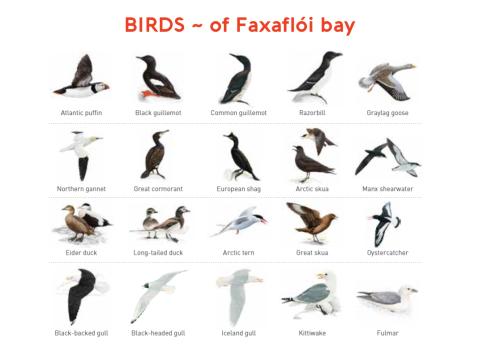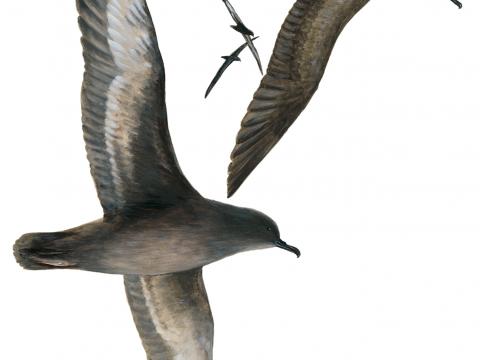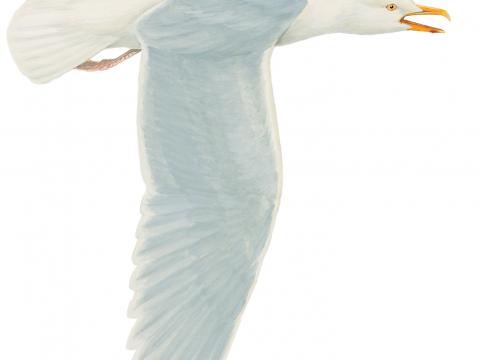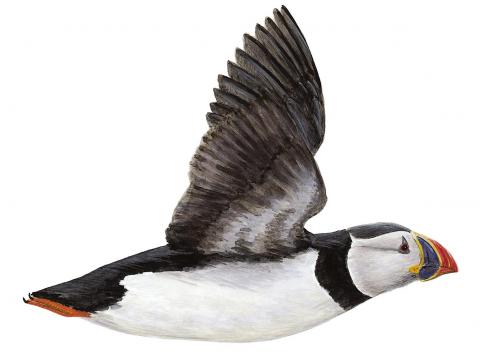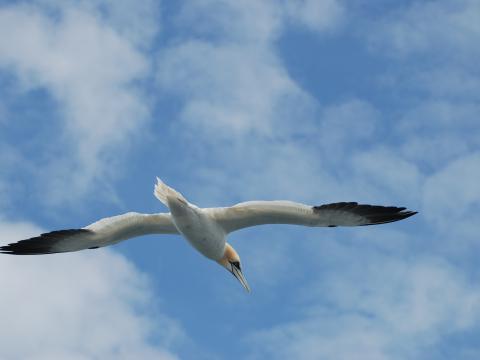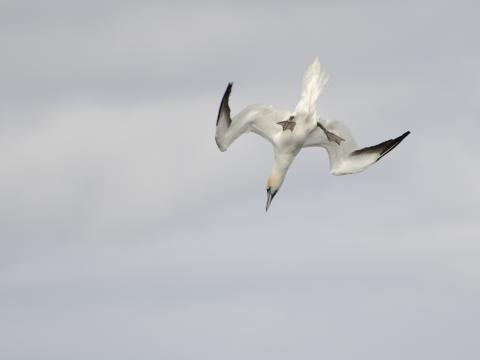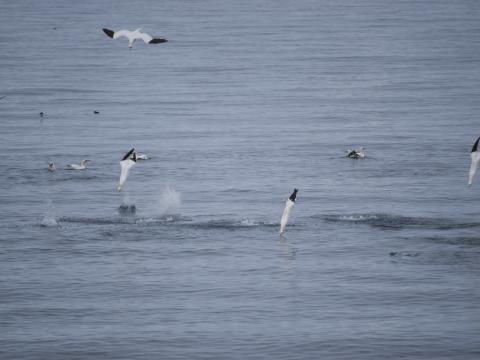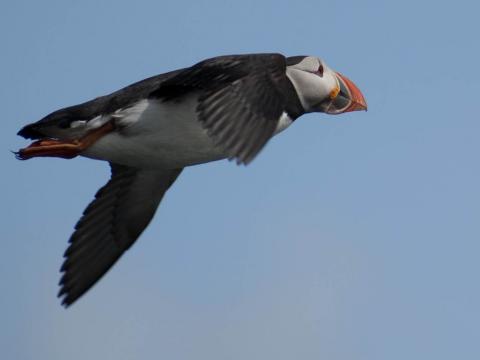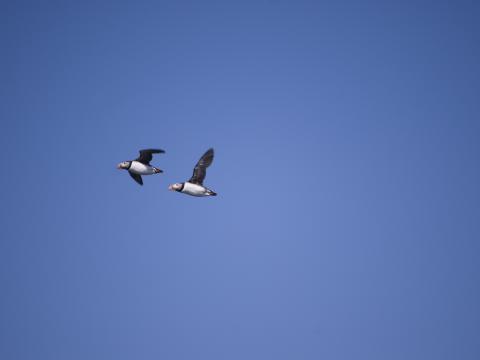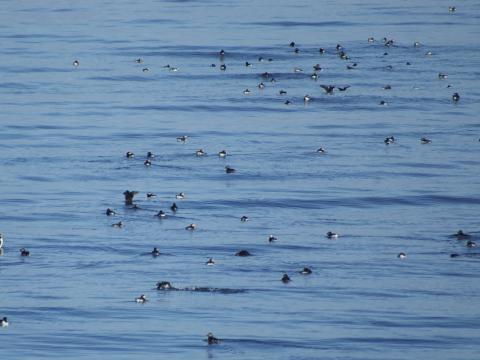Seabirds are an important part of every whale watching tour and they often guide us to the whales. During the summer months the puffins make a spectacle of themselves as well as the gannets, fulmars, guillemots, skuas, arctic terns and many more. The winter birdlife is not so diverse but it is nice to see certain species in areas that you wouldn't normally see.
-
Image
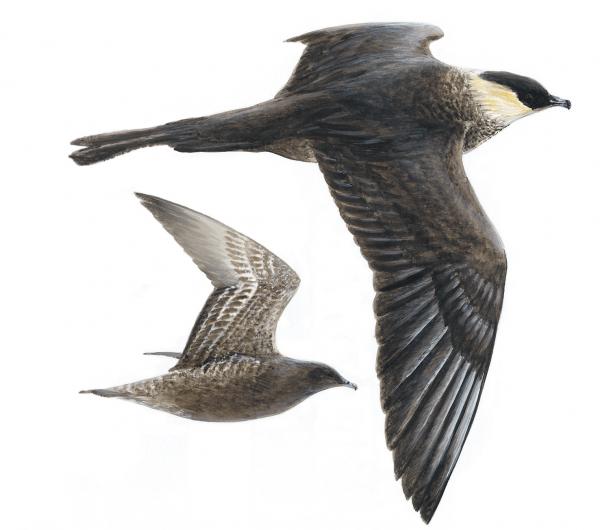 Read more...
Read more...The arctic skua is the main skua species that we encounter on our tours. They are well known for their parasitic behavior called kleptoparasitism, stealing eggs, chicks and fish from other seabirds. The air battles are particularly impressive to watch.
-
Image
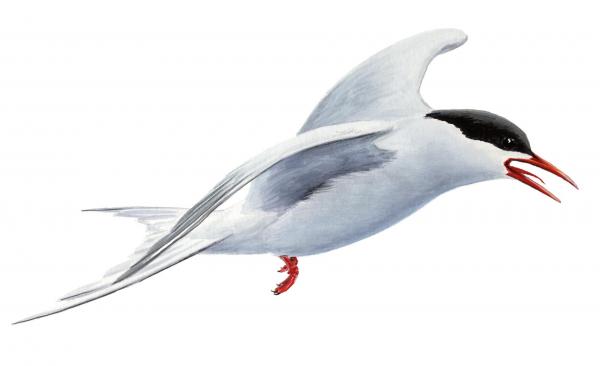 Read more...
Read more...The arctic tern undergoes the longest migration than any known animal on the planet. Every year they travel about 70,900 km (44,300 miles) from the Arctic to the Antarctic and back again. One chick ringed on the Farne Islands in June 1982 was found in Australia in October, travelling about 22,000km (13,640 miles) in just 3-4 months.
-
Image
 Read more...
Read more...Puffins are part of the Auk family of seabirds that also include razorbills and guillemots. They can fly, swim, and dig burrows and are one of three species of puffin in the world. Over half the world’s population of Puffins comes to Iceland to breed. Iceland also has the largest Atlantic Puffin colony in the world. The Westmann Islands in the south has about 700,000 nesting pairs.
-
Image
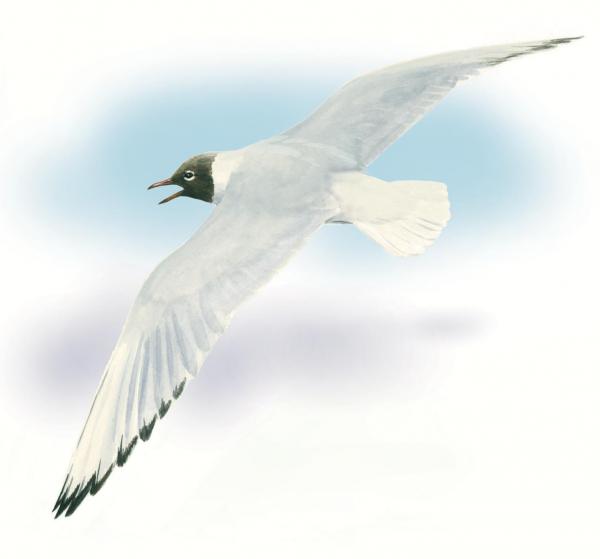 Read more...
Read more...The black-headed gull is small and easily recognisable. In the winter they loose their black head but can still be recognisable by the black spot on both sides of the head behind the eye. Its scientific name means “laughing gull” because of how loud it is and the noise it makes at colonies. They are observed mainly close to the shore or inland.
-
Image
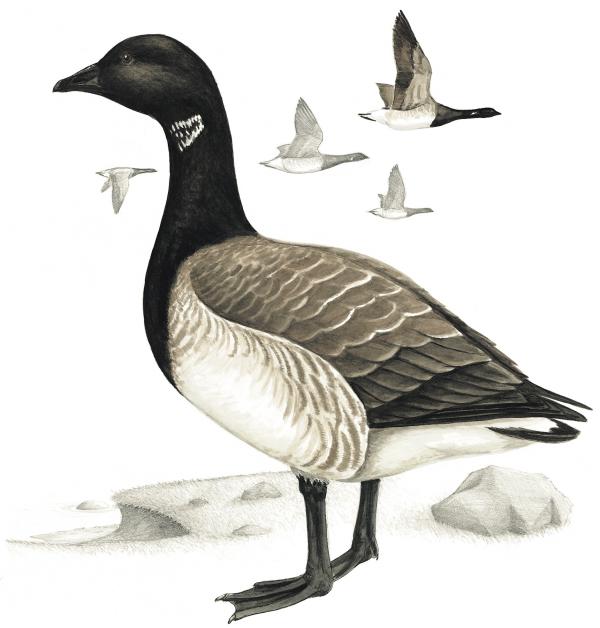 Read more...
Read more...These are the smallest goose species seen in Iceland. They are frequently seen on the three Puffin colonies we visit Lundey/Engey/Akurey. This species are more of a seabird than other geese spending most of their time feeding on the seaweed and other vegetation in shallow seas.
-
Image
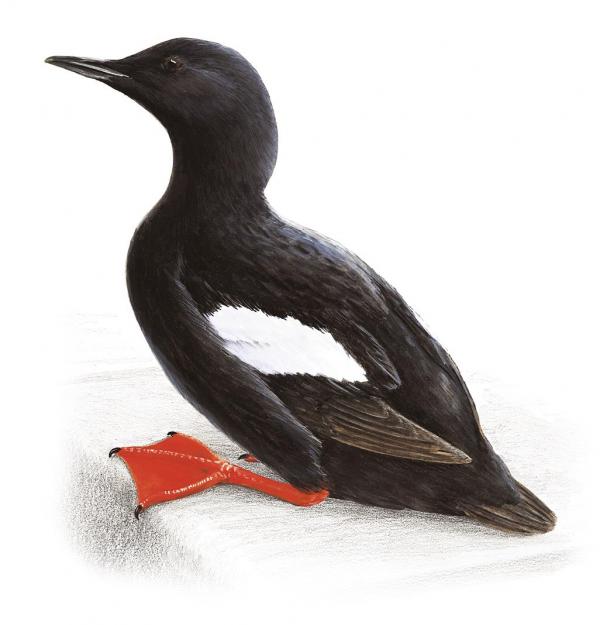 Read more...
Read more...These are the smallest goose species seen in Iceland. They are frequently seen on the two Puffin colonies we visit Lundey/Akurey. This species are more of a seabird than other geese spending most of their time feeding on the seaweed and other vegetation in shallow seas. They don’t breed in Iceland but seen in their thousands in autumn as they stop in Iceland to feed before they contin
-
Image
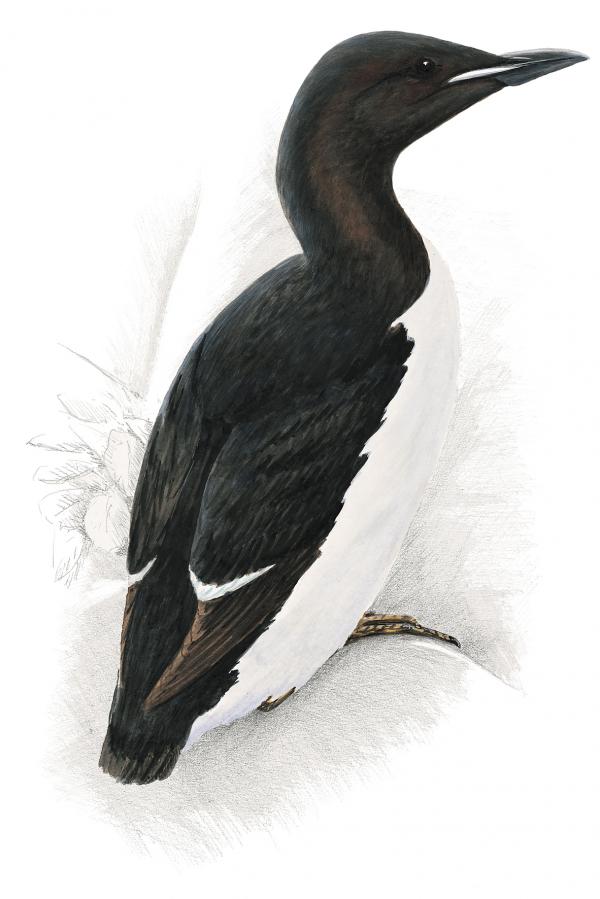 Read more...
Read more...The Brünnich’s Guillemot is a high latitude species and differs in appearance to the Common Guillemot by its shorter, thicker bill with a white gape stripe. The guillemots are now the largest of the Auk family since the Great Auk became extinct in 1844.
-
Image
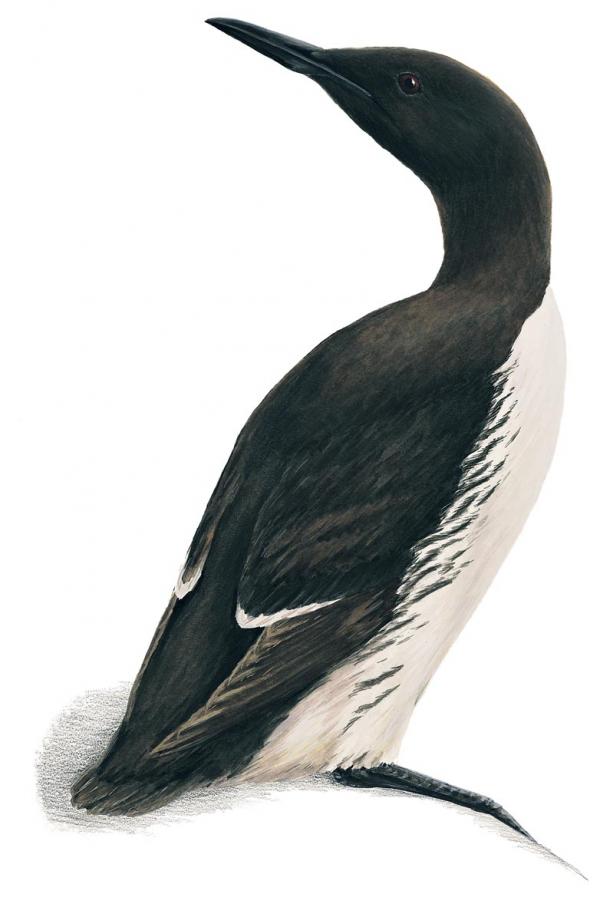 Read more...
Read more...Guillemots are observed in there hundreds if not thousands on the sea and are a close relative of the Puffin. They are one of the deeper diving seabirds diving to a staggering 230m deep for their food but usually only dives between 50-100m.



